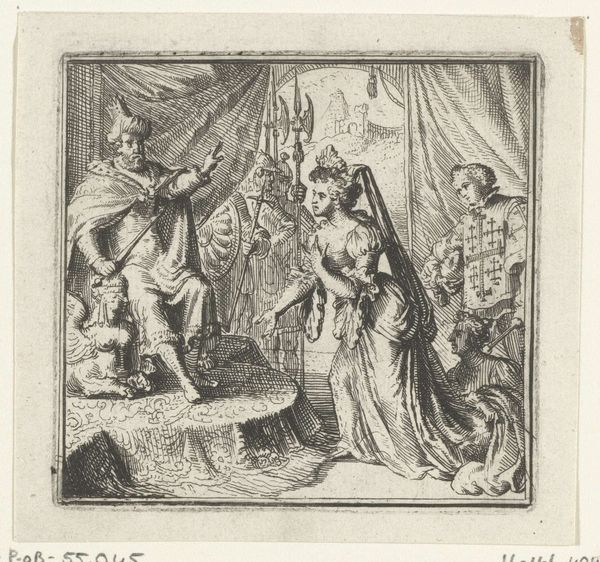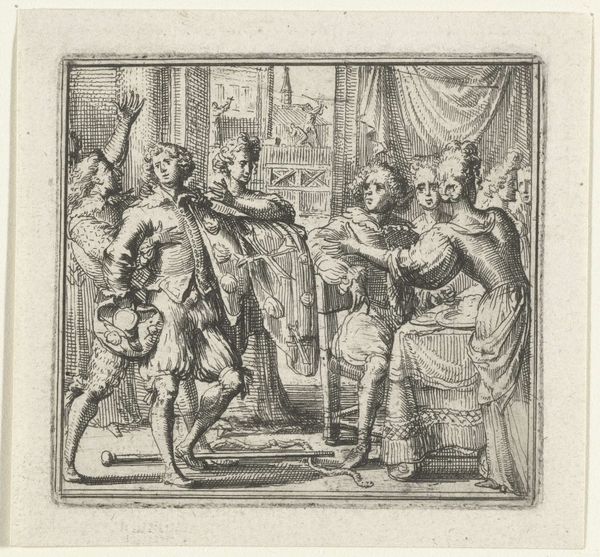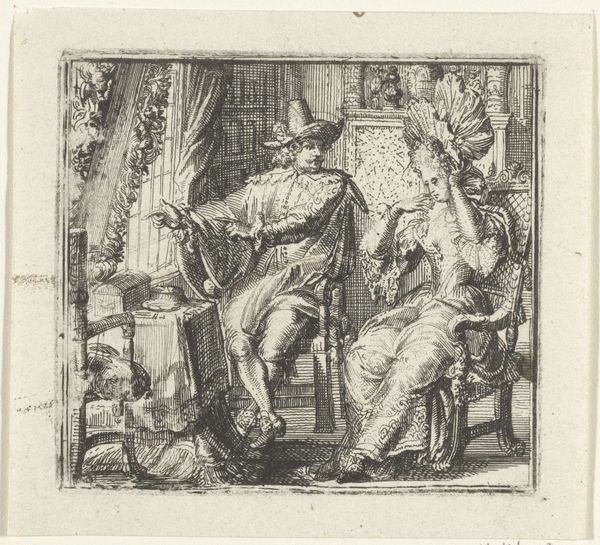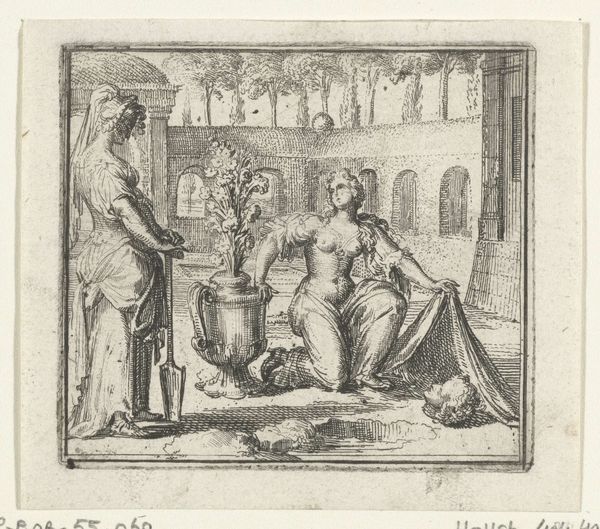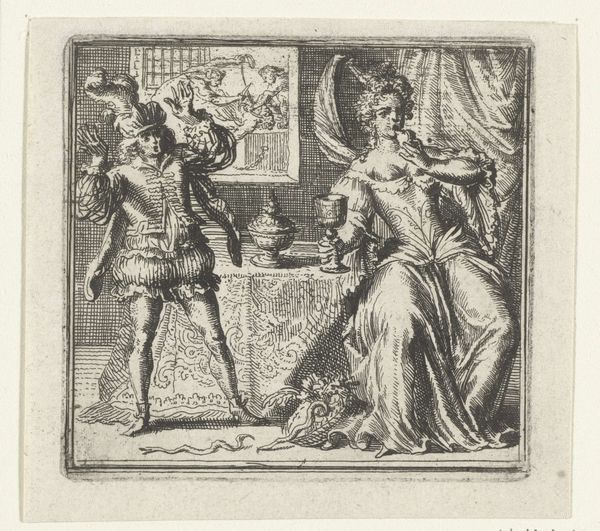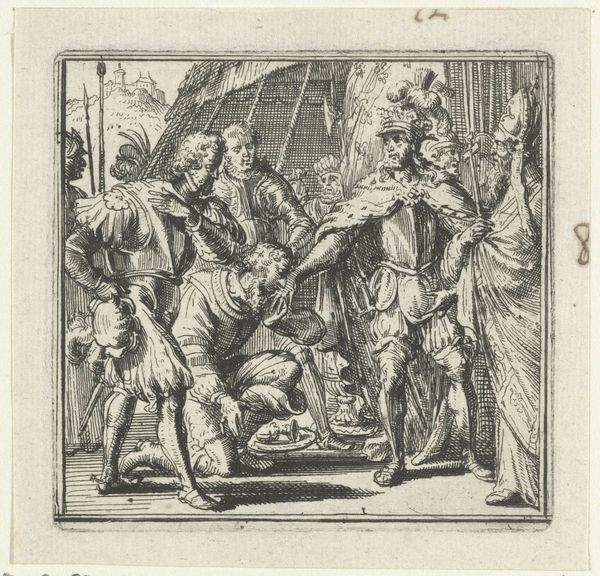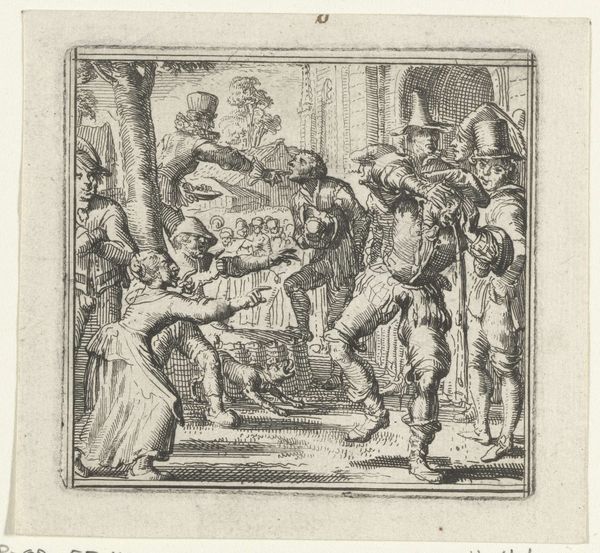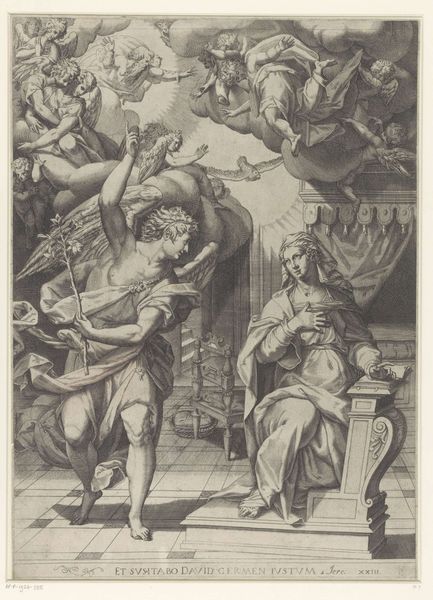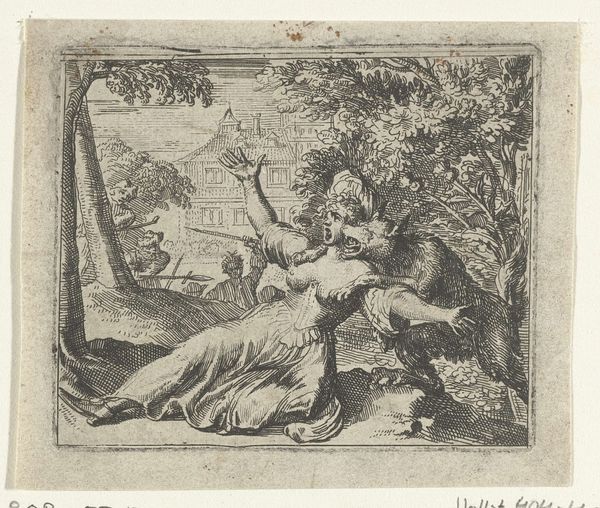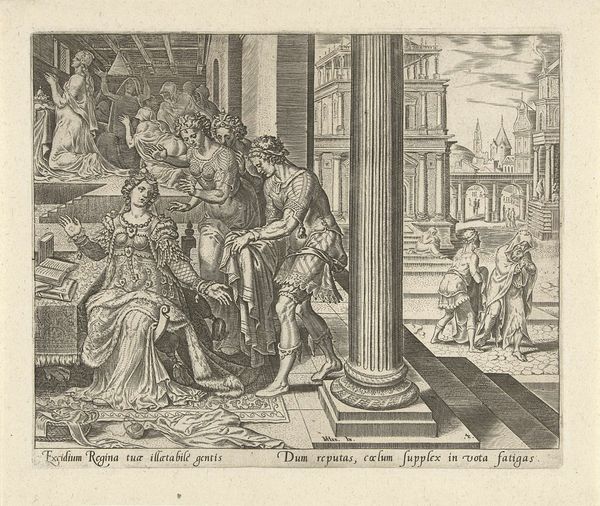
print, etching, engraving
#
aged paper
#
toned paper
#
light pencil work
#
narrative-art
#
baroque
# print
#
etching
#
pencil sketch
#
old engraving style
#
figuration
#
personal sketchbook
#
pen-ink sketch
#
line
#
pen work
#
sketchbook drawing
#
genre-painting
#
sketchbook art
#
engraving
Dimensions: height 73 mm, width 80 mm
Copyright: Rijks Museum: Open Domain
This illustration for Boccaccio's Decamerone was made by Romeyn de Hooghe, using etching— a printmaking technique that really took off in the 17th century. The process involves drawing into a waxy ground on a metal plate with a sharp needle. The plate is then bathed in acid, which bites into the exposed lines, creating grooves that hold ink. This method allowed artists like de Hooghe to achieve incredibly fine detail. Notice the intricate costumes and the expressive faces of the figures. It is all rendered with an almost obsessive level of detail. In the 17th century, printmaking was a commercial enterprise. Etchings like this one allowed stories to be widely distributed and consumed. Look closely and you will see the marks of production that have imbued the work with cultural and social significance. The relatively easy reproducibility of prints democratized art and literature, taking it beyond the sphere of the wealthy elite.
Comments
No comments
Be the first to comment and join the conversation on the ultimate creative platform.
